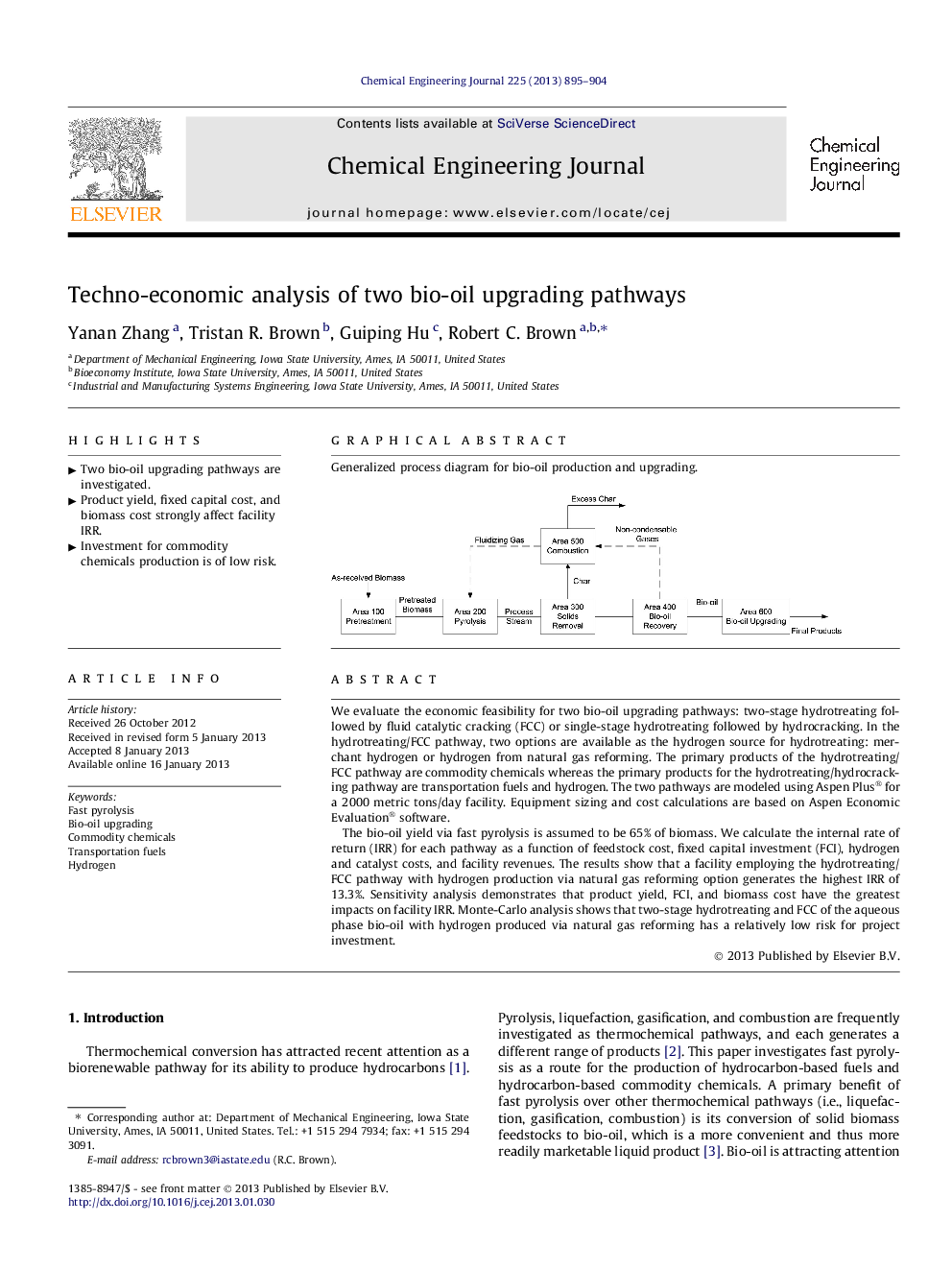| Article ID | Journal | Published Year | Pages | File Type |
|---|---|---|---|---|
| 148737 | Chemical Engineering Journal | 2013 | 10 Pages |
We evaluate the economic feasibility for two bio-oil upgrading pathways: two-stage hydrotreating followed by fluid catalytic cracking (FCC) or single-stage hydrotreating followed by hydrocracking. In the hydrotreating/FCC pathway, two options are available as the hydrogen source for hydrotreating: merchant hydrogen or hydrogen from natural gas reforming. The primary products of the hydrotreating/FCC pathway are commodity chemicals whereas the primary products for the hydrotreating/hydrocracking pathway are transportation fuels and hydrogen. The two pathways are modeled using Aspen Plus® for a 2000 metric tons/day facility. Equipment sizing and cost calculations are based on Aspen Economic Evaluation® software.The bio-oil yield via fast pyrolysis is assumed to be 65% of biomass. We calculate the internal rate of return (IRR) for each pathway as a function of feedstock cost, fixed capital investment (FCI), hydrogen and catalyst costs, and facility revenues. The results show that a facility employing the hydrotreating/FCC pathway with hydrogen production via natural gas reforming option generates the highest IRR of 13.3%. Sensitivity analysis demonstrates that product yield, FCI, and biomass cost have the greatest impacts on facility IRR. Monte-Carlo analysis shows that two-stage hydrotreating and FCC of the aqueous phase bio-oil with hydrogen produced via natural gas reforming has a relatively low risk for project investment.
Graphical abstractGeneralized process diagram for bio-oil production and upgrading.Figure optionsDownload full-size imageDownload as PowerPoint slideHighlights► Two bio-oil upgrading pathways are investigated. ► Product yield, fixed capital cost, and biomass cost strongly affect facility IRR. ► Investment for commodity chemicals production is of low risk.
